
Now eight years post-op,
and their twin girls,
reflect on the life-saving double lung transplant


Now eight years post-op,
and their twin girls,
reflect on the life-saving double lung transplant
Continued from Page 5
University of Utah’s Lung Transplant Center. The doctors and staff were absolutely amazing. Throughout my journey, they saved my life more than once. I trust them with my whole heart.”
Tawny needed two oxygen machines spliced together to get enough oxygen while resting. After rigorous testing to ensure she was a good candidate, doctors put her on a list for a double lung transplant.
“I was high on the list because I was so sick,” Tawny says. “Everyone knew time was running out.”
She was on the transplant list for three months, hospitalized most of the time.
“Waiting was very hard, especially as I became sicker,” she says. “I did pulmonary rehab to try to build muscle and prepare for the surgery, but eventually even that became physically too hard to do. Then, the physical therapists would bring exercise machines to my hospital room. Every day I did what I could.”
Dan, along with Tawny’s parents, Debbie and Dahl Bradfield, took turns staying

with her. They all encouraged her to keep fighting.
“My mom put a picture of Dan and our daughters at the foot of my hospital bed to remind me of what I was fighting for,” Tawny says.
Despite her efforts, Tawny’s health steadily declined.
“One day, doctors mentioned to my mom that it was time to let me pass,” she says. “She begged for more time. My lungs came just a couple of days later.”
In hindsight, Tawny says she felt peace.
“Through all my struggles, I felt a peace, a divine intervention and assurance that I would find the perfect lungs that would save my life,” she says. “God has had a hand in all I’ve been through.”
Tawny’s double lung transplant surgery
March 20, 2017, lasted 51/2 hours. The day has become like a second birthday for her and her family.
“We always acknowledge March 20 as a special time,” she says. “This year to celebrate, we’re thinking about vacationing in Hawaii.”
Tawny encourages people to become organ donors, noting the information on their driver’s license. April is designated as National Donate Life Month by the nonprofit Donate Life America. The organization encourages people to register as organ, eye and tissue donors.
“Please consider allowing your body to be used to save someone’s life, to enable them to finish their mission on Earth,” she says.
Since her surgery eight years ago, Tawny continues to take 22 medications daily to prevent her body from rejecting the transplanted lungs and to boost her immune system.
“I’m strict about taking my meds on a schedule during the morning, afternoon and evening,” she says. “It’s my way to honor my donor.”
Tawny’s donor was a 16-year-old Texan who died from an aneurysm.
“I am so deeply grateful for him,” she says. “I think and pray for him and his family.”
A year after the transplant, Tawny mailed his mother to thank her for her son’s gift.
Online, she watched his funeral video and other videos he and his family had posted.
“It was overwhelming emotionally,” Tawny says. “It was the hardest letter I’ve ever written. What do you say to the person who gave me a second chance at life, knowing she lost her son? I couldn’t imagine her and her family’s grief. Her decision to donate his tissue, eyes and organs saved eight people.”
Tawny asked about his personality.
“She told me he was kind, funny and was always with family and friends,” she says. “He loved music and wanted to be a rapper. Sometimes, I still feel a connection to him and his protective presence watching over me.”
Tawny says her faith and encouragement and prayers from her family and friends carried her through surgery and recovery.
“I could feel the comfort of prayers coming to me from back home,” she says. “I’m still so thankful for that. People donated and sent cards and texts. It meant the world to me.”
After the surgery, Tawny became ill on several occasions with sepsis and sinus and lung infections.
“Through it all, I felt like God was reassuring me that I am still meant to be here, to see our daughters grow up,” she says.
To help her recuperate, Tawny’s parents, mother-in-law Julene Porter and Dan rented a house in Bountiful for more than a year.
“I had to live close to the hospital in case complications developed,” Tawny says. “Our families stepped in to help with everything. They took care of the girls, meals and cleaning, and took me to doctor appointments. I’ll never be able to repay them for all their help. In the end, we all became stronger together.”
Tawny says her biggest takeaways from her medical issues are “to trust in the Lord and his timing, treat people with kindness and never forget your divine destiny.”
“You never know what someone is going through,” she says. “I still put on my makeup and go out, but most people have no idea what I’ve been through or how I’m feeling from one day to the next. It’s a constant battle. Through it all, kindness matters.” n
Your All-Inclusive Lower Mississippi River Cruise Includes:
9-day/8-night exploration
7 ports of call with guided excursion options at each
All onboard meals and our signature evening cocktail hour
Full enrichment package with guest speakers and nightly entertainment
Newest fleet of ships with just 90 to 180 guests
All tips and gratuities
















March 2025 • Volume 72, No. 3
CEO Michael Shepard
SENIOR VP OF CONTENT Leon Espinoza
EDITORIAL DIRECTOR Chasity Anderson, CCC
DEPUTY EDITORIAL DIRECTOR
Noble Sprayberry
SENIOR EDITOR Jennifer Paton, CCC
ASSISTANT EDITORS Victoria Hampton, CCC; David Herder, CCC; Sable Riley, CCC
ASSOCIATE EDITORS
Valeri Saldanha Rosa, Nina Todea
PUBLICATIONS PRODUCTION SR. MANAGER
Elizabeth Beatty
SENIOR PUBLICATIONS COORDINATOR
Alyssa McDougle
Ruralite (USPS 397-460) is published monthly for members for $5.43 per year, plus postage, by Pioneer Utility Resources Inc., 5625 NE Elam Young Pkwy. Ste. 100, Hillsboro, OR 97124—a not-for-profit Oregon cooperative corporation—to serve the communication needs of 46 consumer-owned electric utilities in Oregon, Washington, Alaska, Idaho, Nevada and California. Preferred periodical postage paid at Hillsboro, Oregon, 97123 and additional mailing offices. © 2025 Pioneer Utility Resources. All rights reserved. Reproduction in whole or in part without written permission is prohibited.
Postmaster: Send address changes to Ruralite, 5625 NE Elam Young Pkwy. Ste. 100, Hillsboro, OR 97124-6454
HOW TO CONTACT RURALITE
Subscription services:
Nonmember subscriptions $15 (U.S.) per year; $25 per year (foreign). Prepayment required. Allow 4-8 weeks for first issue. Be sure to identify which local edition you want to receive.
Address Changes:
Utility members, contact your local utility. Subscribers, call us at 503-357-2105 option 3 or email mailingdept@pioneer.coop.
Back issues:
Back issues and extra copies $3. Prepayment required. Supply is limited. Be sure to identify edition, month and year. Call first if ordering back issues to check availability.
To contact Ruralite: Ruralite magazine is published by Pioneer Utility Resources.
P.O. Box 1306, North Plains, OR 97133-1306; 503-357-2105; email: info@pioneer.coop. For more information, visit www.pioneer.coop.
DISPLAY ADVERTISING INQUIRIES
American MainStreet Publications 611 S. Congress Ave., Ste. 504 Austin, TX 78704
800-626-1181 or 512-441-5200
As I write this, the promise of spring is on the calendar, but there are currently no signs it’ll actually occur. I choose to hope for the best.
Spring is known as a season of renewal and fresh starts, and those themes echo throughout this month’s issue.

I’m particularly excited to share our Up Close story about Danny and Angie Butler, the remarkable mother-son duo who represented Walla Walla, Washington, on “The Amazing Race.” Their journey wasn’t just about competing for a million-dollar prize; it was about strengthening an already incredible bond through shared adventures.
Their story reminds us that sometimes the most meaningful victories aren’t about crossing a finish line.
Our spotlight feature, “Bridging the Skills Gap,” explores how innovative programs are reshaping career paths across multiple states. From Alaska Works’ free trade classes to Hermiston High School’s enterprising student-run businesses in Oregon, there are many exciting alternatives to traditional four-year degrees.
At a time when employers are struggling to fill positions, these programs offer hope and opportunity for our region’s workforce.
I am intrigued by Tim Myres’ innovative work combining apprenticeships with college degrees at Sheet Metal Local 104 in California. His program proves we don’t always have to choose between academic and practical education. Students can graduate with both a valuable trade certification and an associate’s degree, at no cost to their families.
Speaking of innovative education, don’t miss Dave LaBelle’s charming reflection on teaching photography via the humble egg. His story about using this simple object to teach students about light, shadow and composition reminds us the best lessons often come from unexpected sources. And because March wouldn’t be complete without a nod to St. Patrick’s Day, Gertrude Treadaway serves up a hearty feast of Irishinspired recipes. Her Guinness-braised beef might just become your new favorite comfort food.
Here’s to embracing the season’s promise of renewal.

For supplemental and interactive content, search @Ruralite on your favorite social media sites.

Director
Until next time, Chasity Anderson Editorial
From reality TV to everyday life, a mother and son celebrate gratitude Up Close, Page 10
Apprenticeships, service programs and trade schools reshape the workforce
Spotlight, Page 12
A Hearty Feast For St. Patrick’s Day
In The Kitchen, Page 16

Tawny Porter and her family celebrate eight birthdays after double lung transplant April is National Donate Life Month. The nonprofit organization Donate Life America encourages Americans to register as organ, eye and tissue donors and to honor those who have saved lives through the gift of donation. Tawny Porter’s story is one of many impacted by generous donors.
By Dianna Troyer
Living in Hawaii and starting a family with her longtime sweetheart, Tawny Porter hardly thought of her childhood diagnosis of cystic fibrosis.
“Dan and I were so blessed with our beautiful twin daughters Karlee and Kylee and great jobs,” the 42-year-old Panaca resident says. “CF is an invisible disease, and I never had breathing issues until my mid-30s.”
Three days after she was born, Tawny was diagnosed with cystic fibrosis, a disease characterized by production of thick sticky mucus, especially in the lungs. She was relatively symptom-free for decades.
“I had a normal childhood,” she says. “I met Dan in first grade when his family had just moved to Panaca.”
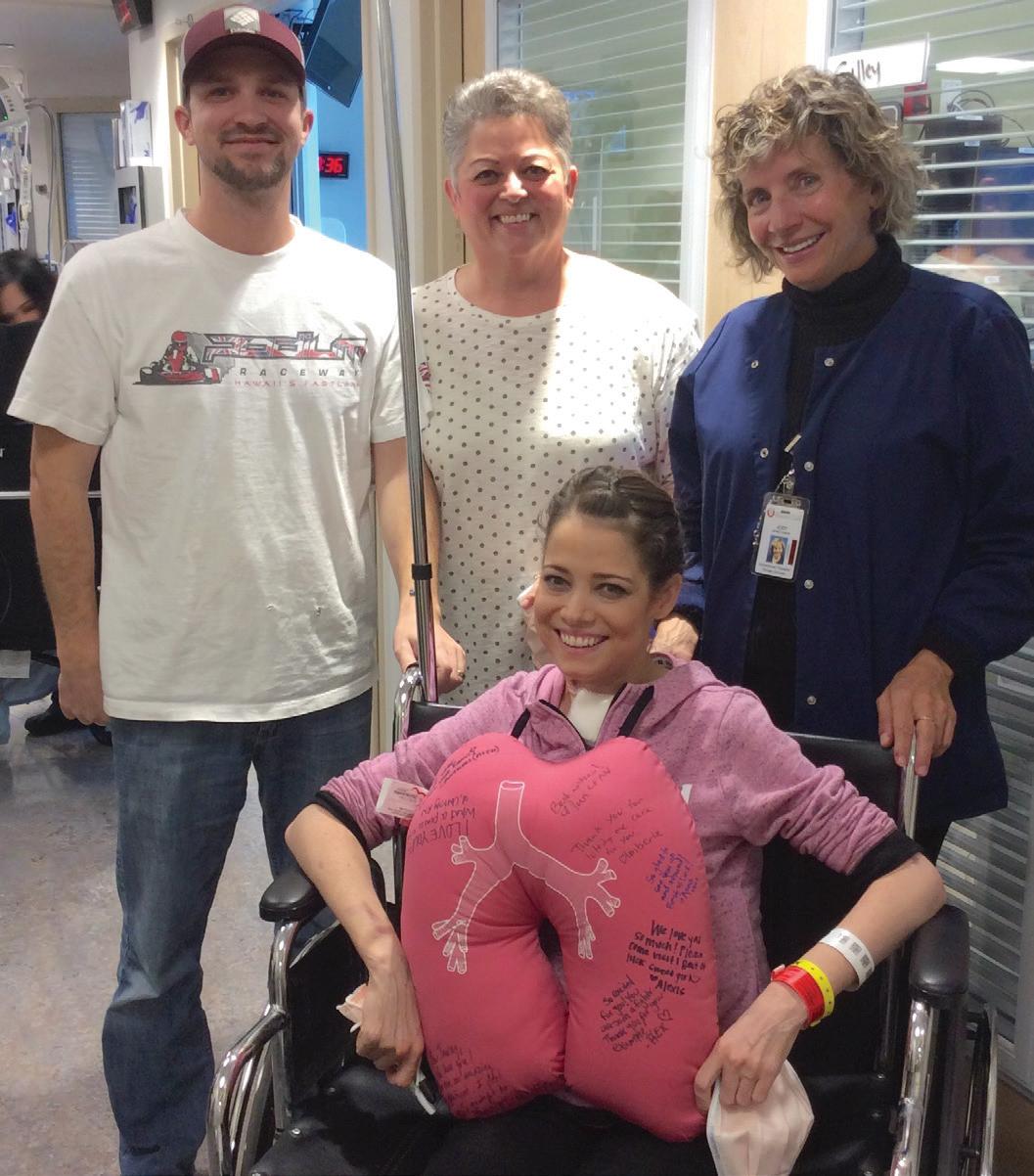
By college, their childhood friendship had blossomed into dating. Tawny enrolled at Southern Utah University, where she earned degrees in public relations and interpersonal communication. After college, they married and looked forward to starting their careers.
At a job fair, Tawny introduced herself to a Target Co. representative and was eventually hired. She worked her way up from store manager to district manager.
In 2010, she was transferred to Oahu, where she supervised security and building maintenance at all Target stores on the Hawaiian Islands. Dan was hired at a Hawaiian bank to manage information technology, a job he still works remotely.
Four years later, the Porters moved back to Panaca after their twin daughters were born so they could be closer to family and doctors who specialized in cystic fibrosis.
During Tawny’s mid-30s, breathing became more difficult, forcing her to go on oxygen full time.
“Then at age 33, it really hit me hard,” she says. “I went downhill quickly and had to move to Utah to be next to the
Continues on Page 8
By Dan Porter
In the following column, Tawny’s husband describes how his wife’s fortitude fuels their family’s future and how a transplant is more of a journey than a destination.
Growing up with Tawny, I knew her as beautiful, capable and someone not afraid of a challenge. I was always drawn to her. She simply never let cystic fibrosis define her or used it as an excuse for taking an easier path in life.
Life was exciting and productive for us after marriage. We enjoyed success at work. We became parents, and the path ahead looked straight and clear. When the effects of the disease were becoming fatal to Tawny, we weren’t quite sure if we believed the doctors when they said a double lung transplant was her only option.
From left, Tawny’s husband, Dan; her mother, Debbie Bradfield; and a therapist celebrate Tawny steadily regaining her strength after her transplant.
All at once, we saw that we might not be prepared for the path ahead of us. True to Tawny’s nature, she was ready to push forward with her positive attitude intact. We were quickly surrounded by others who were willing to travel that path with us. Support and miracles came in the form of Tawny’s parents, my mother, extended family, doctors, friends and strangers.
We are grateful for organ donors and the dedication of medical professionals who never chose the easy path.
Life is not perfect after transplant. We’ve learned a transplant is a journey much more than a destination. Tawny still suffers the side effects of the transplant and of the numerous medications she takes to prevent organ rejection. There is no escaping it, and every day can be a challenge for her.
Through it all, I still see that beautiful, capable girl taking the challenge head on. She somehow manages to be a loving mother and wife even when she is not feeling well. That example is on display daily in our household. I am so grateful for Tawny.
Dan and Tawny grew up

Batteries power toys, remotes and even cars. Now, they’re showing they can help power communities, too.
By Jennah Denney
It’s often possible to use resources immediately while also saving some for later. It can be cost-effective for electric utilities to generate power when it is the most affordable and then save it for when demand is highest.
To do this, we need to use batteries.
To help manage supply and demand, some electric utilities use a variety of battery energy storage systems. These can vary by battery material—be it electrochemical, mechanical or thermal—as well as by size, with
some operating at utility scale. Other, smaller batteries can be placed in residential garages.
Utility-scale battery systems are designed for energy storage to support the electric grid, requiring high initial investments but offering significant long-term savings.
Residential battery systems cater to individual homes, providing more energy independence and savings while still representing a significant investment.
Utility-scale storage systems are large installations that store
huge amounts of electricity. Some can store several megawatt-hours, which could power 500 homes for several hours. Larger installations can store enough to power roughly 1 million households.
The key benefit of batteries is balancing supply and demand. Batteries can take energy produced when the cost of production is cheaper and save it for periods of high demand when utilities may see higher prices.
This can be especially useful in areas where demand can spike or fall rapidly throughout the day.
Batteries also pair well with renewable generation sources, such as solar and wind.
Sometimes, on particularly sunny or windy days, solar panels and wind turbines produce more power than a community needs at the time. Batteries can save that energy for when the sun sets or the winds fade.
Electric utilities can also deploy utility-scale storage systems at electric substations to enhance grid resilience. If a power outage means no electricity is reaching a substation, on-site batteries can continue sending power to critical infrastructure—such as hospitals and emergency services—until power is restored.

With batteries, homeowners can reduce their energy bills and ensure a steady supply of power, even during grid disruptions and outages.
Residential battery storage systems are compact installations designed for individual homes, typically ranging from a few kilowatthours to 10s of kWh in capacity. Often paired with residential solar panels, these smaller systems allow homeowners to store excess energy generated during the day for use at night or during power outages. Residential batteries can help provide a level of energy independence. However, the initial cost of buying and installing a residential storage system is expensive, which may deter some homeowners.
Electric utilities are increasingly recognizing the benefits of residential battery storage. These systems not only support grid stability and resilience, but can help reduce costs for utilities and their customers. Some utilities offer energy-storage programs and rates, which means homeowners can contribute to a more efficient and reliable energy system that benefits the entire community.
As electric utilities navigate the complexities of modern energy supply, utility-scale and residential battery energy storage systems can be a benefit to all of our lives.
Energy storage involves devices and methods that absorb power when it’s generated and save it for when it’s most needed. The ability to “warehouse” large quantities of energy economically and over long periods of time will help utilities improve grid operations, integrate renewables and boost reliability.
Below are the four most widely used storage methods. Grid-scale battery
Kinetic storage; most common: flywheel and compressed air Battery storage; most common: lithium-ion and lead
Racks
















By Vicki Hillhouse
The energy was electrifying in the Activities & Recreation Center at Point Loma Nazarene University for the premiere of season 36 of “The Amazing Race.” Students gathered, and friends and family flew in to watch Resident Director Danny Butler and his mother, Angie, a middle school teacher, make their series debut in 2024.
It felt like half a lifetime to Danny since the duo set out on their reality television adventure, representing Walla Walla, Washington, in challenges around the globe against 12 other pairs with a $1 million prize waiting for one team at the finish line. It had actually been a year and a half since filming ended.
Danny says holding the secrets of the season for so long was a grind. Everyone in the room wanted to know where in the world they went (Mexico, Colombia, Chile, Argentina, Uruguay and Barbados); what kinds of wild adventures they had (paragliding into Medellin, rally car racing in Cordoba, tracking down the childhood home of singer Rihanna in Bridgetown); and how far they made it (sixth place).
But there was a much larger spoiler: Danny and Angie made series history in the eighth episode. Separated from their film crew in a Barbadian roundabout, they lost so much time in the wait to reunite and continue with the race that they were ultimately eliminated. Fans were reeling about the unprecedented loss, caused not by Danny and Angie’s actions but by decisions outside of their control.
In the year since, their elimination is one of the most askedabout aspects of their experience. Angie’s second-most asked question is from mothers who want to know the secret to a family bond so tight that her eldest son would invite her to compete on a reality show in the first place.
Their response to just about every question is one of cheerful gratitude—a hallmark, along with their deep-rooted faith, of their time on the show.
“We didn’t want to disappoint each other,” Angie says. Their ending—however controversial—was a sort of gift.
“The way we went out—Mom killed it that day playing pickleball—neither of us failed each other,” Danny says.
“Our job on that show was to love others well and reflect our love for each other, and I think we did that,” Angie says.
Danny hopes to one day return to “The Amazing Race” for an all-stars season to get another chance. In the meantime, he and Angie launched a podcast, “Read the Clue,” where they recapped the episodes from their season—with Angie in Walla Walla and Danny in San Diego. They have made appearances together, including at Over the Edge Celebrity Weekend, a threeday brush with reality TV stars raising funds for their chosen nonprofit organizations.



ABOVE AND RIGHT: Mother-and-son team Angie and Danny Butler race through Colombia on the 36th season of “The Amazing Race,” which aired in 2024. They paraglided into Medellin and, among other things, had to harvest and process a kilogram of ripe Arabica beans as one of their roadblock challenges. PHOTOS BY KT KARZEN/CBS AND YURI HASEGAWA/CBS
to speak about her experience and the bonds she has with her three children. She looks up other show contestants when she’s traveling outside of Washington and was even recognized at the bottom of Bryce Canyon in Utah when a family asked her to take their photo and realized they’d seen her on television.
“I never dreamed that would be part of my journey,” she marvels. “Once we got off the show, I thought that was it.”
Danny, 28, had long been preparing himself to be a contestant. In their Walla Walla home, the family, including father Dan, built puzzles, played games and enjoyed challenges.
A dogged fan of competition shows,
Danny knew he wanted to be a contestant someday when he watched the 12th episode of the 15th season of “Survivor.” Contestants and their
race their way to a dais in the middle.

“I thought, ‘That is the coolest thing. I want to do that someday,’” he says.
“The Amazing Race” held a particular place in his heart. When Danny was a freshman in high school, he staged his own version of the show in Walla Walla. Friends and fellow youth group members pedaled their bikes through town, following his clues and competing in challenges. It led them, among other places, to the local candy store where they had to guess flavors of jellybeans in a blind tasting to move on.
Making the show about a decade later was a dream come true. Now, with the 37th season slated to begin March 5, Danny and Angie look forward to expanding their reality television family.
Danny plans to host the kickoff with another version of his own race for friends the weekend before. Then he’ll put together a premiere party at his home.
“I will watch on my TV and be ready to jump on socials to celebrate and root for so many fun people,” he says. n



By Ginger Meurer
Employers are struggling to fill positions in a tight labor market.
There are only 92 available workers for every 100 job openings in California, according to the U.S. Chamber of Commerce. In Oregon, the stat is even more staggering, with 66 available workers for every 100 open jobs. To see the rate in your state, visit tinyurl.com/availableworkers.
Good jobs are out there for those with advanced skills that can come from career and technical education programs and apprenticeships. Even volunteer experience can transform a candidate into a desirable hire. Here is a sampling of programs working to fill the skills gap.
Launched through a trade union partnership more than two decades ago, Alaska Works (alaskaworks.org) offers free classes covering basics in welding, wiring, first aid, construction, forklift operation, carpentry and more. The idea, says Gena Bolton with the Fairbanks site, is to give Alaskans ages 16 and older a taste of a variety of industries.
“We encourage people to take several different trainings, so they have a better idea of what they’re interested in or what their skill level is,” Gena says. “Not everyone is going to be an electrician. We need carpenters. We need laborers. We need welders.”
Alaska Works also helps with applications for union apprenticeships and interview training. Participation doesn’t
guarantee union acceptance, but Gena says it shows an applicant’s commitment, and that does not go unnoticed.
Not all participants become union members. Gena says some use the forklift certification to earn an extra $3 an hour in their current jobs.
“There's a lot of different kinds of success,” she says.
Giving potential union recruits a taste of the trades early is the goal of the preapprentice programs overseen by Jeff Reinhardt, executive administrator at Local 66 Western Washington Sheet Metal.
Local 66 works with several initiatives, including Heavy Metal Summer (hmse.org), a series of free summer camp explorations offered across the country, and ANEW (anewcareer.org), a Puget Sound-based multiunion partnership.
Local 66 offers its own summer preapprenticeship for rising high school seniors or recent graduates. Jeff says the union usually only takes two candidates from any one school. Once accepted, recruits are expected to arrive at 6 a.m. and work all day in classrooms and in the shop.
“Can you imagine a high school kid not getting up at 6, but starting at 6 a.m.?” Jeff says. “Most of the time they’re in the parking lot here at 5:15, and there are some that are coming a half hour, 45 minutes away. It’s impressive to see the level of commitment.”
The first week, the program always loses a few of the 20 or so recruits.
“Like I tell them, ‘Don’t feel bad if you decide this isn’t what you want to do,’” Jeff says. “At least you can check that box and say, ‘Hey, I tried it. I don’t want to do that.’”
At the end of the program, about five participants are offered apprenticeships, skipping applications and interviews. That fiveyear apprenticeship comes with paid training, health insurance and on-the-job experience.
One of the goals of the program is to prevent the “seven-year gap,” a phenomenon where people spend four years in college and another three trying to find jobs before finally discovering the benefits of a trade apprenticeship.
“So, why don’t we just go straight to them and see what kind of interest they have,” Jeff says.
Roger Berger’s accounting students at Hermiston High School in Eastern Oregon would often wonder when they would use the skills learned in his class.
Roger had an immediate answer for them when the opportunity arose to launch a school coffee shop. More than 17 years later, that initial practical application has evolved into a career and technical education department with 11 pathway programs, including agriculture, health sciences and engineering.
In the business program, students manage two concessions businesses, run a print shop making signs and promotional materials, and produce apparel for the school district. Roger says people are surprised at the program’s scale, with students handling every aspect from human resources to publicity.
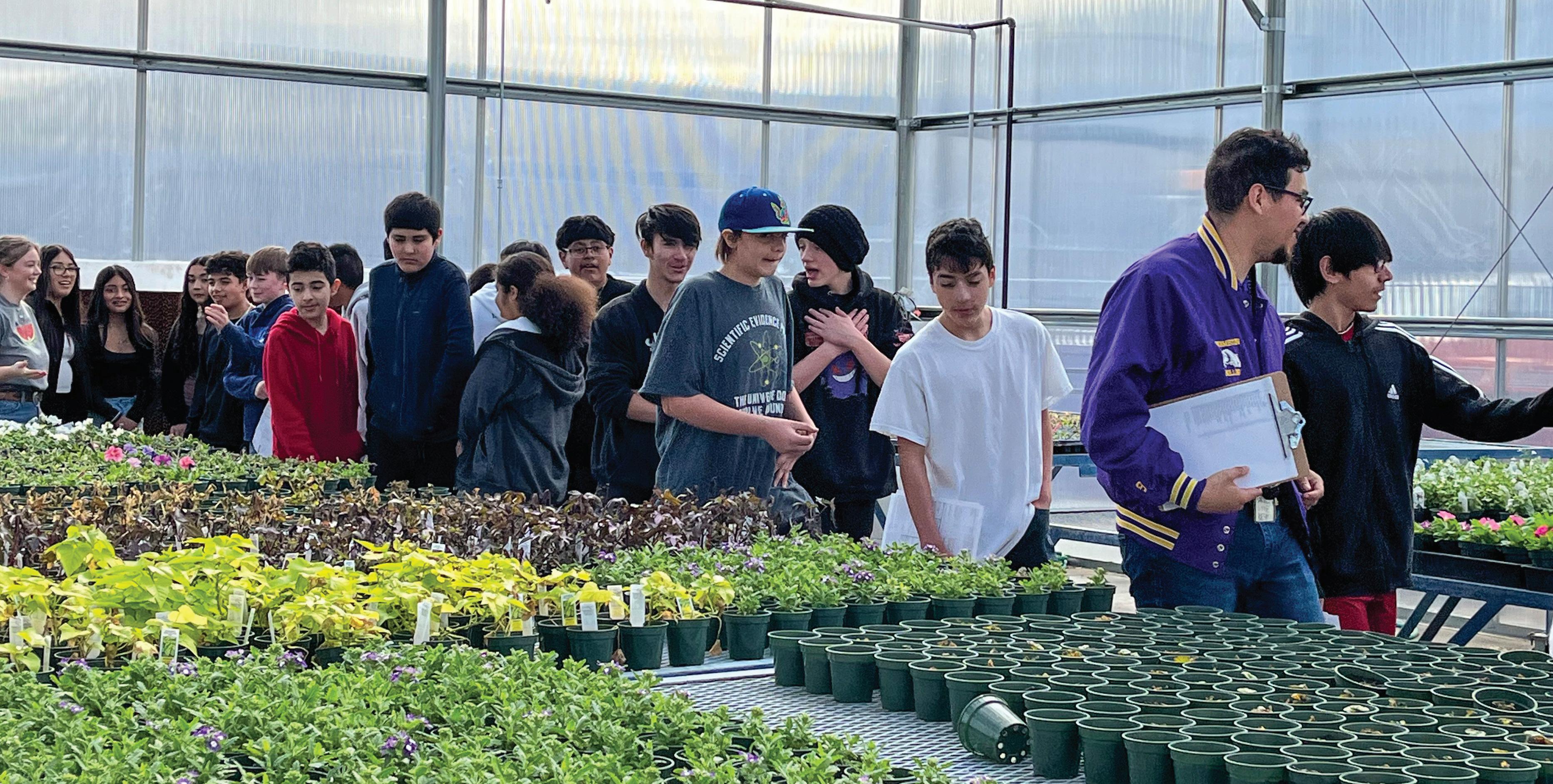
“Our goal this year was to do $200,000 between five businesses, and I think we’ll probably be closer to $250,000,” he says. “People always think, ‘Oh you have a Keurig and a little teapot.’ No, we have a full espresso machine, and we have probably one of the best ovens in the country. We’re really trying to build the opportunity for our students to work with the equipment they’re going to see out in the field.”
Thanks to community partnerships, students participate in internships, job shadowing, practicums and site visits. Roger is grateful that Umatilla Electric Cooperative provides experiences for computer science, engineering and marketing students. Others have gained skills through business and medical partnerships.
"What we’re trying to show is there is incredible value in school and in taking advantage of opportunities and giving yourself the best chance for success,” he says.
Tim Myres got tired of hearing a four-year degree was superior to an apprenticeship. So, when he was working at Sheet Metal Local 20’s training center in Indiana, he partnered with Ivy Tech Community College to help apprentices earn associate degrees and journeyperson status simultaneously. When he moved to Local 104 in the San Francisco Bay area, he wanted to launch a dual-credit apprenticeship.
“We’re always raising our hand, yelling out loud that we’re as good as a college,” Tim says. “Without a degree, people can argue that. So, it’s important that if they go through our program, they not only develop a career that they’ll have for a lifetime, with all the skills they learn, but they’ve also received an associate degree. Nobody can argue now that we’re not at the same level as a college. We are a higher education facility."
Most participants get college credit for experience gained through their five-year apprenticeships, but there are usually a few classes needed to complete an associate degree. Teaming with Foothill College, Tim worked to translate union training into community college equivalents that led to degrees for his apprentices.
In the end, there were two classes remaining: English and humanities. The college offers a humanities class at no cost to apprentices. For the English requirement, students can enroll in an industry-specific program that teaches how to write construction documents and professional responses to evaluations and draft research papers on an issue affecting the Local 104 in California.
“It's not just, ‘I had some English class, and I had to read stuff.’” Tim says. “No, this is actually stuff you can use and learn from that will help you moving forward as a professional."
Foothill College is developing a bachelor’s degree for those who want to go into project management.
Managing family dynamics and expectations is a big part of Tim’s mission, too.
“There are a lot of families that say, ‘Don’t go into the building trades. You’re smarter than that. Go to college,’” he says. “They can have both here. They can have a job where they’re making money, receiving health care benefits, receiving a pension and getting the college degree, and it costs the family nothing. How can parents argue that?”
Even after college, a career path isn’t always clear. One choice is public service. AmeriCorps (americorps.gov) helps train and deploy volunteers who work with schools, nonprofits and government organizations.
Branches include AmeriCorps NCCC, a full-time, team-based, residential program for 18- to 24-year-olds tapped to help in
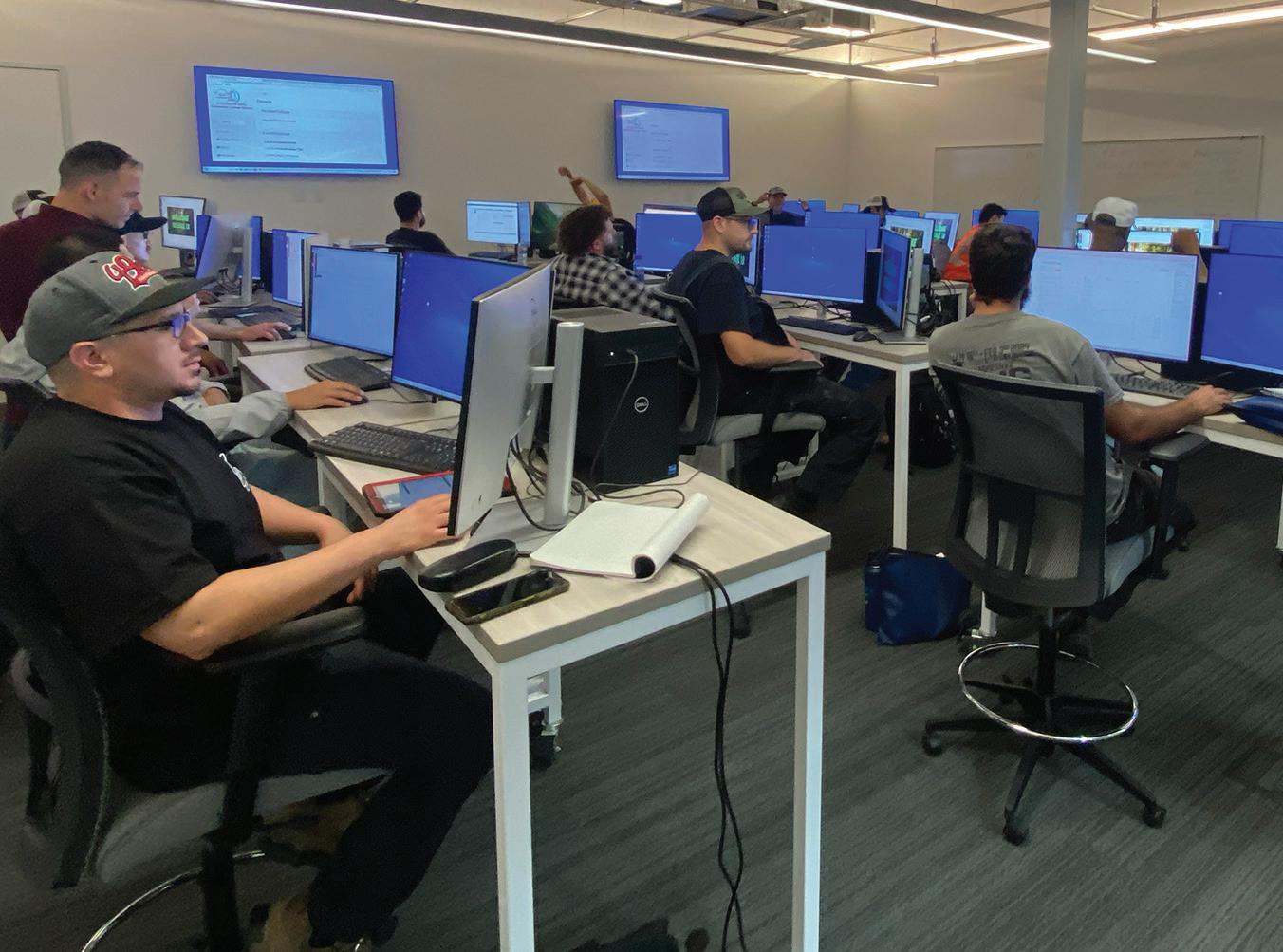
A sheet metal apprenticeship program affiliated with Local 104 in the California Bay Area helps students graduate with journeyperson status, five years of paid classroom and on-the-job training, and their associates degrees.
natural disasters, work on public land and more. AmeriCorps VISTA, short for Volunteers in Service To America, places individuals with organizations that fight poverty. AmeriCorps State and National matches participants with organizations that see service as a solution to local, regional and national challenges. AmeriCorps Seniors provides retirees with opportunities to serve.
Benefits for AmeriCorps participants include scholarships to use on higher education or to pay off student loans, and modest stipends to cover living expenses. Jacqueline Simon, AmeriCorps senior public affairs specialist, says the program gives people who aren’t sure what they want to do yet the opportunity to pause and get some actual hands-on experience in the field.
“I think that’s actually a really important thing to have the opportunity to explore and learn and find more about yourself,” she says. “There is a place for everyone. That I am certain of, whether someone is 18, right out of high school and not really sure if college is right for them, or what path to study in college, or if they just need a breather. It is an incredible hands-on experience where you learn new skills, you build professional relationships, and you get guidance from people who have worked in a field for a long time.”
A breather is exactly what AmeriCorps alumnus RoShawn Perry needed after finishing college in Ohio. He wanted to return to California to be close to family and had dreams of graduate school but needed a break from the classroom. An AmeriCorps representative encouraged him to apply to be a lead for an NCCC team. He served a year and then signed up for a second stint through the AmeriCorps State and National program working with adolescents.
“I really enjoyed my experience,” RoShawn says. “It really stretched me a lot of ways. It gave me a huge boost of confidence as a leader.”
After earning his master’s degree, RoShawn returned to AmeriCorps and served as a unit leader, helping direct teams of young adults traveling the country. Now he works for a nonprofit that partners with AmeriCorps sponsoring volunteers.
RoShawn encourages anyone who’s uncertain about what chart to course for their life to take time to serve others, travel the nation and get to know different communities and people.
“It will allow you to have new experiences that will hopefully expand your world views and your perspective in life,” he says. “And you get to do it while making lifelong friends and having a fun time.” n

ABOVE: Alaska Works offers free classes, including heavy equipment operation to give Alaskans 16 and older a taste of a variety of industries. PHOTO COURTESY OF ALASKA WORKS PARTNERSHIP BELOW: RoShawn Perry, back row, center, joined AmeriCorps after finishing college. He later became an AmeriCorps unit leader and now works for a nonprofit that partners with the volunteer organization.
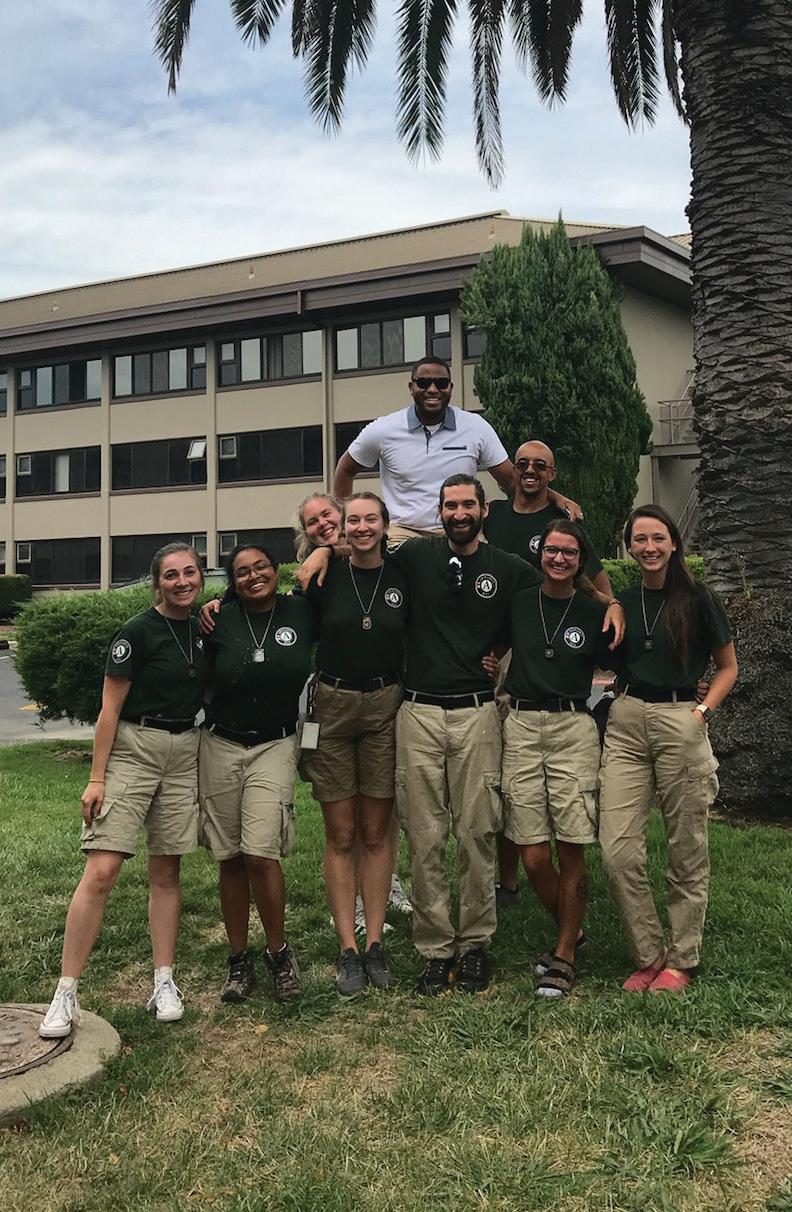

Recipes by Gertrude Treadaway
PHOTO BY KRISSY HAYNIE
Guinness Braised Beef
2 tablespoons cooking oil
21/2 pounds beef (crosscut shanks, chuck short ribs or beef for stew)
Salt and pepper
6 medium shallots, sliced thin
4 to 5 sprigs fresh thyme, chopped
1/4 cup all-purpose flour
16 to 32 ounces Irish stout, depending on how much liquid you want
Heat oven to 300 F.
2 tablespoons dark brown sugar
2 bay leaves
Rosemary sprigs
1/4 cup tomato paste
2 to 3 garlic cloves, chopped
2 cups baby carrots
Fresh parsley, chopped for garnish
Trim any excess fat from the beef and cut into cubes. Season liberally with salt and pepper. Gently dust with a bit of flour, and reserve the rest of the flour. If working with crosscut beef shanks, leave whole and skip flour-dusting.
Add the cooking oil to a Dutch oven over medium-high heat. Brown the beef, then remove it from the pot. Lower the heat to medium. Sauté the onions with the thyme. If needed, add a little more cooking oil.
When the onions are translucent, stir in the flour. Cook for about 1 minute. Deglaze with some of the stout, scraping off brown bits from the bottom. Add the remaining stout, brown sugar, garlic, tomato paste, rosemary sprigs, carrots and bay leaves. Increase the heat and stir. Return the beef to the pot, and bring to a boil. Cover, then transfer to the oven.
Cook for 21/2 to 4 hours, or until the meat is tender. Check on the meat around the 2-hour mark. Remove from the oven. Discard the bay leaves and rosemary sprigs. Serve as is, or over mashed potatoes or rice.
11/2 cups vanilla ice cream
¾ cup whole milk
1 drop green gel food coloring
1/2 teaspoon mint extract
Whipped cream
1 tablespoon green sprinkles
2 maraschino cherries
In a blender, combine ice cream, milk, food coloring and extract. Blend until smooth. Divide into two glasses. Top each with whipped cream, sprinkles and a cherry.
1 medium head cabbage, about 2 pounds, shredded
4 pounds potatoes, peeled and quartered
2 cups whole milk
1 cup chopped green onions
11/2 teaspoons salt
1/2 teaspoon pepper
1/4 cup butter, melted
Minced fresh parsley
Cooked bacon, crumbled
Place cabbage and 2 cups of water in a large saucepan. Bring to a boil. Reduce heat and cover. Simmer until cabbage is tender, about 10 minutes. Drain, reserving cooking liquid. Keep cabbage warm in a separate dish.
In the same pan, combine potatoes and reserved cooking liquid. Add additional water to cover potatoes. Bring to a boil. Reduce heat. Cook, uncovered, until potatoes are tender about 15 to 20 minutes.
Meanwhile, place milk, green onions, salt and pepper in a small saucepan. Bring to a boil, then remove from heat. Drain potatoes. Place them in a large bowl and mash. Add milk mixture, and beat just until blended. Stir in cabbage. To serve, drizzle with butter, and top with parsley and bacon.
2 to 3 pounds corned beef brisket with spice packet
4 cups beef broth
1/4 cup Worcestershire sauce
2 pounds small red potatoes
2 pounds baby carrots
1 large head green cabbage, cut into wedges
1/2 teaspoon salt
1/2 teaspoon black pepper
Place corned beef into a large pot with lid. Pour beef broth over brisket to cover. Add Worcestershire sauce. Sprinkle spice packet over brisket.
Bring to a boil over high heat. Cover pot and reduce the heat to low. Simmer for 50 minutes per pound of brisket, until the meat shreds easily with a fork.
Add potatoes. Cover and cook until potatoes start to get tender, about 15 minutes.
Add carrots and cabbage wedges. Season with salt and pepper. Continue to cook, with lid on, for 15 minutes until vegetables are tender. Cooking time depends on the size of the carrots and potatoes.
Remove meat from the pot. Let rest for 15 minutes. Slice against the grain, then shred. Serve vegetables with liquid. Season with additional salt and pepper to taste.
4 cups all-purpose flour
1/2 cup butter, softened
4 tablespoons sugar
1 teaspoon baking soda
1/2 teaspoon salt
11/4 cup buttermilk, divided
1 egg
1/4 cup butter, melted
Heat oven to 375 F. Lightly grease a large baking sheet.
Mix flour, softened butter, sugar, baking soda, baking powder and salt in a large bowl. Stir in 1 cup buttermilk and egg. Turn dough out onto a lightly floured surface, and knead slightly. Form dough into a round, and place on prepared baking sheet.
Combine melted butter with ¼ cup buttermilk in a small bowl. Brush loaf with this mixture. Use a sharp knife to cut an ‘x’ into the top of the loaf.
Bake until a toothpick inserted into the center of the loaf comes out clean, about 45 to 50 minutes. Check for doneness after 30 minutes. You may continue to brush the loaf with the butter mixture while it bakes.
Shepherd’s Pie
Mashed potato topping
2 pounds potatoes, peeled and cut into chunks
4 tablespoons butter
Filling
1 pound ground beef
1 small onion, diced
2 cloves garlic, minced
2 cups frozen peas, carrots and corn medley
2 tablespoons flour
1/2 cup beef broth
Heat oven to 350 F.
1/4 cup sour cream
1/4 to 1/2 cup milk
Salt and pepper, to taste
1 tablespoon tomato paste
1 tablespoon Worcestershire sauce
1 teaspoon rosemary
1/2 teaspoon thyme
1 bay leaf
Boil the potatoes until fork tender. Drain. Add butter, sour cream, milk, salt and pepper. Mash the potatoes until desired consistency. Set aside.
In a large skillet, brown the ground beef with the onions and garlic. Drain excess grease. In the same skillet, add the frozen vegetables. Cook for 5 to 7 minutes, stirring occasionally.
Sprinkle flour over the meat and veggies. Stir to mix. Add tomato paste; mix. Add the broth, Worcestershire sauce, rosemary, thyme and bay leaf. Bring to a simmer, then reduce to low heat. Cook, uncovered, for 10 minutes, adding additional broth if necessary to prevent the meat from drying out.
Remove from heat. Remove the bay leaf, then spread the meat mixture in an even layer in a 9-by-13-inch dish that has been sprayed with nonstick spray. Top the meat with the mashed potatoes, making an even layer of potatoes. Bake for 30 minutes until brown and bubbly. If desired, place the dish under broiler to brown further.
I'm interested in paperbacks or books under the title of “Conan the Barbarian” or “King Kull.” Please respond with titles and purchase prices. I'll also cover costs to ship. Thanks.
Mike Goodpaster
270 Old Stage Road Goldendale, WA 98620 miletrmu@frontier.com
I'm looking for a copy of “A Friend Called Chum” by Bernelda Wheeler. Hardback preferred, but will take paperback. Can pay a fair price and shipping if requested. Thank you.
S. Dietrich 1203 1st St. Tillamook, OR 97141
I am searching for leftover fabric with fun prints kids would enjoy. I need about 1½ yards of fabric for a standard size pillowcase. I plan to make a bunch of pillowcases and give them to children in hospitals.
Abigail Cowart 29 Hilltop Lane Wahkiacus, WA 98670
I am looking for quilt batting pieces. Just scraps. I can stuff pillows for dogs or kitties in need of beds. Any size and batting will do. Thank you in advance.
Kimberly Cody 98 Basham Lane Troy, MT 9935
Senior statesman stamp collection to a good home. Instead of selling my 50-yearold collection I will send it to a serious collector. Tell me why you want it.
Patricia Slaven
1769 Blackbird Lane Lincoln, CA 95648 developtalent@gmail.com
Looking for 1½ inch buttons for a craft project. Would appreciate any color. Thank you.
J. Weaver 1884 S. Road Lenore, ID 83541
I have small cat pictures to give away.
Pearl Price P.O. Box 7047 Hermiston, OR 97838
We have a house in Manzinita, Oregon. My wife and I were out to dinner on Jan. 25. We stopped at the Dunes restaurant, then stopped in the Little Apple store for some supplies. Somewhere between these two stops, I lost my ring. I had gloves on, and I think the ring may have slipped off my finger while I was removing the glove. This ring has a stone and oval. It is gold with a semiprecious black hematite stone with an intaglio face of Mercury. It was given to me by my late uncle who had mailed it to my late aunt during his tour of duty during World War II. I am offering a $100 reward for its return.
Rodger Lance 8309 NE 152nd Ave. Vancouver, WA 98682 rrlance@comcast.net
The Fort Rock Valley Historical Society board members thank all of you who responded to our request for vintage Christmas ornaments. We received many beautiful treasures and were able to create a wonderful “period” Christmas tree display in one of our old buildings. We are truly grateful.
Toni Collins, Nancy Bowers, Jana Kitteredge, Tom Rosenthal, Joni Bramlett Fort Rock, Oregon
Words cannot fully describe the gratitude my family would like to share with all the many wonderful readers. Our mom, Verneil Johnson, was surprised beyond belief by the huge outpouring of heartfelt birthday cards, letters and keepsakes. The warmth expressed by so many of you made for a very happy little old lady on May 18, when she turned 100 years old. We went to a wonderful Mexican restaurant in her Amery, Wisconsin, town that day, where she was serenaded with a birthday song and cake. The large dining table next to us included a new father very gently holding his tiny 2-week-old infant. Just feet apart from each other, were two people, our mom and this tiny baby both born in May, exactly 100 years apart. Thank you so much.
Clayton Johnson Gold Beach, Oregon
Send your request—with no attachments—to readerexchange@ruralite.org or mail to Reader Exchange, 5625 NE Elam Young Parkway, Suite 100, Hillsboro, OR 97124. Fill in the subject line with Reader Exchange. Acceptance, scheduling and editing are at the editor’s discretion. Single requests only, please. No duplicates. Submissions are handled on a first-come, first-served basis and as space allows. We cannot honor every request.
Please affirm you have authorization from all appropriate parties before submitting. By submitting, you indemnify Reader Exchange, Pioneer Utility Resources Inc., its officers, directors, employees, utility clients and insurers from all legal liability incurred by the publication of information.
We no longer accept pen pal requests. You may submit a pen pal request as a Marketplace ad. Marketplace pricing applies.
When submitting a milestone request, please send it at least two months before the milestone.
Phone numbers will not be published. Email addresses will be published if part of the ad, but the request must include a postal address.
Request must include the name and address of the electric utility that provides your magazine.
Think about the things you loved to do that are dif cult today — going for a walk or just sitting comfortably while reading a book. And remember the last time you got a great night’s sleep? As we get older, health issues or even everyday aches, pains and stress can prevent us from enjoying life.
So what’s keeping you from having a better quality of life? Check all the conditions that apply to you.
Then read on to learn how a Safe Step Walk-In Tub can help.
A Safe Step Walk-In Tub lets you indulge in a warm, relaxing bath that can help relieve life’s aches, pains and worries.











A Safe Step Tub can help increase mobility, boost energy and improve sleep.

It’s got everything you should look for in a walk-in tub:
• Heated Seat – Providing soothing warmth from start to nish.
• MicroSoothe® Air Therapy System –helps oxygenate and soften skin while offering therapeutic bene ts.
• Pain-relieving therapy – Hydro massage jets target sore muscles and joints.
• Safety features – Low step-in, grab bars and more can help you bathe safely and maintain your independence.
• Free Safety Package




Find water in the desert at Sabino Canyon Recreation Area. Located outside of Tucson in Southern Arizona, the area has great views of the Santa Catalina Mountains, beautiful desert landscapes and greenery sprouting up along Sabino Creek.
Follow the Water Sabino Creek runs almost year-round, fed by water from seasonal springs and the Santa Catalina Mountains. In the riparian areas around the creek, you may find cottonwood, willow and walnut trees, compared to the mesquite and saguaro found in the desert areas. The Sabino Dam near the Sabino Canyon Visitor Center is a popular spot for visitors.
For shorter trips, consider the Sabino Dam or Rattlesnake Trail Loop—easy to moderate trails that are less than a mile round trip. A popular and moderately challenging longer hike is the 8.4-mile round-trip Bear Canyon to Seven Falls Trail. Many birds live along the trail, and the trail ends at Broadmoor Seven Falls.
Sabino Canyon is part of the Coronado National Forest, which covers almost 1.8 million acres in Arizona and New Mexico. The forest is known for its 12 mountain ranges and huge range in elevation—going from 3,000 feet to 10,720 feet. In one day, visitors can see snow and views from the mountaintops, lounge by a mountain lake and wander through cactus-filled desert.
The Sabino Canyon Recreation Area Visitor Center is open from 8 a.m. to 4:30 p.m. daily. To enter the park, visitors need an $8-per-vehicle day pass, a $10 week pass or a $40 annual pass. To start planning your trip, visit https://tinyurl. com/43954t7b.


Whether exploring abroad or handling your daily routine, the ATTO SPORT keeps you moving.
Everyday Freedom
Mobility scooters keep you independent, making daily life easier and more enjoyable. From errands to visiting friends, they help you stay active and connected. Whether it’s a scenic outing or your to-do list, mobility scooters open new opportunities and let you enjoy life your way.
Folding mobility scooters offer a lightweight, compact design that fits in car trunks, on planes, and on cruises. They are easy to store and perfect for travel and everyday use. Whether exploring new places or handling errands, folding scooters provide convenience, independence, and the freedom to go anywhere.
The ATTO SPORT
folding travel scooter delivers a perfect blend of style, innovation, and performance. It is designed for those who value independence and sophistication
Compact Convenience
The ATTO SPORT transforms effortlessly from a full-sized scooter to a compact trolley in seconds, making it perfect for travel, quick storage, and easy transport wherever life takes you.
Effortless Portability
The ATTO SPORT’s innovative design separates into two lightweight parts, with the heaviest weighing only 37 lbs.
It's easy to lift, store, and transport in the trunk of a car without sacrificing durability or performance.
Unmatched Comfort
The ATTO SPORT has an ergonomic and adjustable seat and handlebars, crafted to ensure a smooth, enjoyable ride every time, even on longer journeys.
Sleek and Stylish
The ATTO SPORT redefines mobility with a sporty, elegant design that looks as great as it feels. Its modern aesthetic and 3-wheel agility let you easily navigate tight spaces, and it is equipped with electronic stability control for added safety on descents and turns.
Airline Approved Battery
The ATTO SPORT is equipped with a TSA-approved battery. Its compact size and optional split mode make it the only mobility scooter that can fit in the aircraft's overhead compartment.
Reliable for Every Adventure
With a driving range of up to 12.5 miles (extendable to 25 miles with the XL battery), a 6.2 MPH top speed, a weight capacity of 300 lbs, flat-free, shock-absorbing tires, and 4-inch ground clearance, it is ideal for air travel and outdoor exploration and built for longevity.
Front and Rear Lights
ATTO SPORT’s powerful front and rear LED lights enable riding in dark conditions.
It's Never Too Soon
Time waits for no one, so why should you? There’s no better time to reclaim your mobility and make the most of every moment.
Don’t wait! Call now to buy your ATTO SPORT and receive a free XL battery.


Free in-home demos
Exceptional service
Flexible payment plans
Expert Technicians
Multi-location service network Most

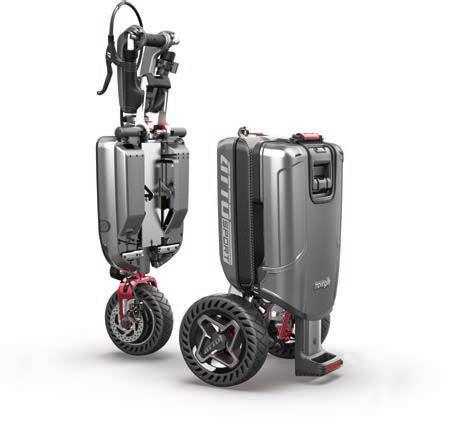

Lightweight design makes lifting effortless
Story and photo by Dave LaBelle
When I began teaching at Western Kentucky University in the 1980s, thenProgram Director Mike Morse gave a first assignment titled, “The Egg,” to students in the basic photo class. At first, I was a little taken aback by the frivolity of the assignment. We were a photojournalism program, not an art photography school. However, I quickly saw the genius of the exercise.
Designed to encourage students to recognize how light and shadow can reveal texture and shape, a chicken egg was the perfect model. Eggs are readily available and relatively inexpensive as props, and you can eat them after a photo session if you like.
Eggs are also easy to transport and, unlike living models, don’t talk back or whine about the environment being too cold or too hot. And they don’t expect payment.
The goal was not to see what a student could do to an egg or how many locations they could photograph it in. Rather, it was to recognize how light in different forms, intensity and direction influenced the way the camera saw the egg. When light illuminates the shell from the side, it reveals the egg’s texture, and from behind, its shape.
Some of the photos turned in cracked me up, and there were some egg-cellent results.
A few students took their eggs into the studio, opting for a controlled environment. Others got egg-cited and carried their models outdoors, camping or hiking, preferring a natural backdrop. Eggs were photographed in unexpected and precarious places. Others hatched a plan to boil their eggs first before carrying them out into the world to be exposed to the elements.

NIKON D810 56mm lens ISO: 640 f/2.8 at 1/200
One woman carefully broke her egg and photographed each half. Another dressed an egg in clothing as if a relative of Humpty Dumpty. No doubt some tenderhearted students talked to their eggs, reassuring they were not breaking up with them.
Some students chose not to put all their eggs in one basket and tried a variety of environments and lighting, eggs-hausting every angle. I remember a resourceful student photographed his egg with light coming through it rather than falling on it.
Still others chose multiple egg compositions, upwards of a dozen in some cases, to show repetition of form and pattern.
As with any class, there were some who missed the point of the assignment and received lower grades. They weren’t bad eggs, as such, they just didn’t listen or grasp
the point of the lesson. They splattered eggs with baseball bats, dropped them from tall buildings, took them to the beach and dressed them as a family of Smurfs.
One student placed an egg next to nursing puppies as if was the runt of the litter. The mother didn’t seem to mind, but the light was less than flattering.
Needless to say, it was a fun assignment, revealing the creativity, resourcefulness and potential of first-year students. n

Photographer, author and lecturer Dave LaBelle has captured special moments for more than half a century, sharing photo tips and life perspectives with readers. For more of his writings, visit davidlabelle.com and his blog at bridgesandangels. wordpress.com.
This is an exercise to help us notice how light and shadow influence the way we see things. When we think about it, all of life is about light and shadow. Consider sidelight to show texture or backlight to reveal shape. Watch how shadows falling on your egg follow the egg’s shape. As with any challenge, have fun with this exercise and take your time; you don’t have to scramble to find an unusual environment. In fact, you don’t need to leave your home. However, if you do go outdoors, you might get a few odd looks from folks curious why you are carrying or making pictures of an egg. But this might be a great way to bring you out of your shell and start a conversation with a stranger. As a photographer, I know I am a shell of my former self. I cannot move as easily or as quickly as in my youth, but I can still see and appreciate how light falls upon and nourishes every corner of our world.
Email your best image (just one, please) with caption information, including an explanation of how it affects you, to gph@pioneer.coop. We may share submissions on our website and social media channels.




















Please allow two - three weeks for delivery; include your email address if you would like a shipping confirmation.

By Miranda Boutelle
Q: How can landscaping help lower my power bill?
A: There’s a lot going on in the space around our homes. Competing factors of aesthetics, safety, energy efficiency and water conservation, and the increasing risk of wildfires are a lot to consider. Thoughtful planning and good design can address these factors and result in year-round energy savings.
Carefully positioned trees can save up to 25% of a typical household’s energy use, according to the United States Department of Energy. When selecting the right trees and other foliage, research what is best for your local climate. Select native species naturally adapted to your location for lower maintenance. Strategically placed deciduous trees allow for summer shade and passive solar heat gain in the winter when leaves have fallen. This can lead to energy savings in summer and winter.
Slower-growing trees might take longer to provide maximum shading benefit, but their roots are typically deeper and branches are stronger. These factors can make them less likely to be damaged by wind, snow, ice or drought.
Be sure to plant large trees far enough away from your home to prevent damage from falling branches or root damage to your home’s foundation.
Keep in mind: If you have a rooftop photovoltaic solar system, even a small amount of shade can significantly reduce energy production. Consider planting smaller plants closer to the home to shade walls, windows or hardscaped surfaces.
Windbreaks are another landscaping strategy that can be beneficial for energy savings in windy areas. The DOE says windbreaks reduce wind speed by as much as 30 times the windbreaks’ height. That, in turn, reduces wind chill near your home and can lower heating costs. The DOE recommends planting two to five times the mature tree’s height away from your home.
Plant evergreen trees and shrubs for windbreaks, and consider adding fences or earthen mounds to help lift the wind over your home. In cold climates, they offer the added benefit of acting as a snowdrift to keep snow from piling up against your home.
Keep landscaping clear of dryer vents, heat pumps, and airconditioning units to ensure access for maintenance and airflow around those locations.
If you live in an area at risk of wildfire, create a defensible space


around your home. Consider hardscaping with gravel, bricks, pavers or stone shaded by fire-resistant awnings or covers. Plant fire-resistant plants with proper spacing from your home and other structures on your property.
When landscaping, always consider safety first. Call before you dig to ensure you know where any underground power, gas, water or sewer lines are located. The national 811 Underground Service Alert program routes you directly to your local resources. Call 811 or visit call811.com before you dig.
Be mindful of overhead power lines, too. Look up and check the surroundings before setting up ladders. Be thoughtful when planting new landscaping that could encroach on power lines. Utility equipment should have at least 10 feet of clearance, when possible.
As you prepare to refresh your yard for the coming spring and summer, consider ways you can boost your energy efficiency for more comfort and savings year-round. n
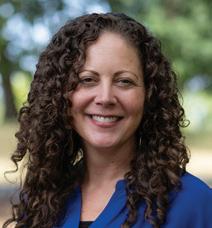
Miranda Boutelle has more than 20 years of experience helping people save energy. She has worked on energyefficiency projects from the Midwest to the West Coast. Today, Miranda is chief operating officer at Efficiency Services Group in Oregon, a cooperatively owned energyefficiency company.
4x5 round bales, Meadow Foxtail Orchard Grass. 4x4 Timothy, small square. nas@cpcinternet.com; 208-435-4637 or 208435-4002. 1225
Reinforced custom-sized pond liners (39 cents/sqft). Hay covers, greenhouse covers, any width and length. Truck tarps and more. High puncture and tear strength. Best price guaranteed. Celebrating 43 years in business. www.btlliners.com. 541-447-0712. 0425
Buying antiques and collectibles: advertising signs, porcelain signs, gas pumps, beer signs, antique toys, cast-iron coin banks, neon signs and more. Jason, 503-310-3321 or tjabaughman@yahoo.com. 0325
Buying American Indian collectibles, Navajo blankets and rugs, baskets, beadwork, etc. Also, quality paintings of the early Southwest and Americas. Call 760-409-3117 or send photos to amer.ind.baskets@gmail.com. 0625
WC Collectibles. We buy comic books! Local to Inland Northwest. Willing to travel. WCCollectiblesCheney@gmail.com; 509-496-1835. 0525
1950 16-inch Shirley Temple Doll includes unopened, 24 boxed outfits from 18 Shirley Temple films. Plus, 96 Shirley movie panels, w167 Stamps & “Child Star” biography book. DOLLSLLC@comcast.net; 503-539-7601. 0325
1948 Chevy Fleetmaster. “Under construction” trophies. Mustang II, front end. Ford 9-inch rear end, V8, automatic, disk breaks. Needs to be finished. $8.5K. 530-233-2115. 0325
Dodge Cummins X-Cab. 4x4. 2001. Canopy. Auto. Runs well. High miles. $11K, possible trades. 541-786-0228. 0325
Extra nice, rare Cummins Mega-Cab. 200. New tires, trans, AC. Loaded. $28.5K; will trade for living-quarter horse trailer. 541-786-0228. 0325
1955 Chevy 5-window PU, 1st series 3100. Frame-off restoration by Glenn Vaughn Restorations. All original. $38K. Text or call 206-351-2623. 0325
Books, Magazines, Videos
“The Bunny Book; What Would You Name a Book about Bunnies and God?” Bunnies learn about matches, separation, bullying, fear, death, God and more. 626-482-4955. 0425
Ads 25 words or fewer are $35 a month. An extended ad of up to 35 words is $50 a month. Contact information is included in the word count. Phone numbers and emails count as one word.
Longer ads may be placed. Contact 503-357-2105 or info@pioneer.coop for pricing information.
Ads are for customers of member co-ops, public utility districts and municipals only. Subscribers and nonmembers may inquire about pricing at 503-357-2105 or info@pioneer.coop.
Ads must be direct and in first person, and are subject to approval and editing.
Closing deadlines (in our office): May issue—March 31, 2025.
If submitting ad by mail, send appropriate payment with your name, address, email, phone number and the name of the electric utility that provides your magazine to: Marketplace, P.O. Box 1306, North Plains, OR 97133. Make check or money order payable to Ruralite.
We accept credit card payments for ads submitted by email. Send ad to info@pioneer.coop.
Call 503-357-2105 to pay by credit card.
Advertisements are accepted in good faith. Pioneer Utility Resources is not liable for interactions between buyers and sellers.
Turnkey cafe, pizza, bakery in the picturesque town of Cedarville, CA. Newly renovated, fully equipped commercial kitchen, cozy dining and bar room, potential mini brew pub. Priced for quick sale, $225K. Shelia, 530-569-0529. 0425
For sale: successful Northeast Oregon Drive-In Diner. Union, OR. Owner wishes to retire after 28 years. RMLS #24493530. Walt BrookshireBroker, Oregon Trail Realty, 541-805-8689. $185K. 0325
43-year-old, turnkey, international, river running shuttle business in AZ, with 2 homes and more. Please contact seller for more information and photos at info@rrshuttleservice.com. Be sure to check out our website at rrshuttleservice.com. 0325
Celebrate Art Center East’s 47th Birthday and Membership Drive throughout March in La Grande, OR. Enjoy special promotions and support the arts. artcentereast.org. 0325
Annual Quilt and Needlework Show in Pahrump, NV, at Bob Ruud Community Center. April 4-5, presented by the Shadow Mountain Quilters. Shadowmountainquilters.com. 0325
Equipment/Tools
Wood splitter; like new. Only split two cords with it. 503-543-7208. $1,850. 0325
Motor lift on wheels. Great for taking 5th wheel plate out of truck bed. $50. 503-543-7208.
Northeast, OR. 1 bd., 1 ba., bonus room. Nice smaller home. Water/sewer/garbage paid. On the river. $650 month, plus deposit. 55-plus preferred. Phone calls only. 541-519-3400. 0325
Free materials—church, government uniting, suppressing “religious liberty,” enforcing National Sunday Law. Be informed. Need mailing address only. TBS, P.O. Box 374, Ellijay, GA 30540. tbsmads@yahoo.com; 888-211-1715 0325AR
The Wheat Land Communities’ Fair in Ritzville, WA, is currently seeking a reliable and responsible summer groundskeeper/ camp host. Responsibilities include mowing, watering, general maintenance, overseeing the campground and other duties as needed. Would ideally be on-site May through midSeptember. Full hook up provided. Interested person(s) contact Dan at skamaniadan@gmail. com or a letter of interest to P.O. Box 14, Ritzville, WA 99169. 0425
28th annual Oft Angus Bull Sale. March 20. Producers sale yard, Vale. Selling 90 fall and 2-year-old bulls. Terry, 208-741-0824 or Colleen, 208-202-8352. 0325
Foster parents needed to care for teen youths in Wasco and Hood River counties. Agency provides on-call support, training, $2.1K/youth monthly reimbursement, 2 days off/month. Fosterinfo@nextdoorinc.org; 541-308-2207. 0625
Looking for that special knife? I hand make custom hunting and fishing knives. I also make other metal and wood crafts. Buckeyeknives.com; 559-212-0693. 0325
Local commercial fisherman sells summer catch of preserved freshness by blast freezing at sea, gourmet canned tuna on internet. Sept.June. 100% guaranteed the best canned tuna you ever tasted. Original, jalapeno and garlic flavors available. To order: twofisherstuna.com or 206-799-1082. 0525
Granite cemetery markers at affordable prices. Will ship to most places. For more info: Joe, 541-815-8906 or highdesertmemorials@gmail. com; www.highdesertmemorials.com. 0325
Pets
Border collie/McNab puppies. The best dog you will ever have. Males and females, $450 each. Colton, OR. 503-314-0145. 0325
160 acres bordering BLM with off-grid cabin. Creek, LOP tag eligible, 5 bay machine shed. $385K. Duke Warner Realty, 541-987-2363; ddwr@ortelco.net. 0325
3 beautiful 1.01-acre lots in Pahrump, NV. Awesome mountain view in nice area. No HOA. $30K each or two for $55K. Easy access to off-roading. Horses OK. Also 10-acre lot with water rights and underground utilities. pkcfitness@hotmail.com. 775-209-2830. 0325
320 acres east of Adel, OR. Borders Hart Mountain views, Steens Mountain and Beaty Butte. Landowner tags, very rural. $263K. For maps: 541-659-1573; thejugglingman3@gmail. com. 0325
$180K. 160 acres, proven gold claims. 131 miles north of Fairbanks, AK. 50 yard per hour shaker plan. Complete water system. Text, 907-223-3036. 0325
John Day, OR. Palm Harbor energy efficient 3 bd., 2 ba. home on 1.99 acres. 50 gpm well, heat pump. $389K with mower, $386K without. 541-633-3614; steve@crestviewcable.com.
Granite, OR. 3 city lots, 3/4 acre each, one has an off-grid cabin. Year-round activities: hunting, fishing, hiking, skiing, snow-mobiling, 4x4, etc. $200K for all 3. 541-519-9077; billpathanley@gmail.com. 0525
Let me help you buy or sell ranch, farm and recreation property in OR. Fourth-generation Oregonian, prior ranch owner. For sale: Klamath Marsh, OR. 173.65 acres. $2.5M. Guest Ranch Overlay. John Gill, 541-480-9161; johngill@landandwildlife.com. Land And Wildlife brokerage. 0325
Recreational Rentals
Bed and Birds; a guesthouse. Wet meadows, range, forest, dark sky. Sleeps 9. Lakeview, OR. Explore or ride? Near ski hill. Reasonable. 541-219-2044. 0425
Bend country cabin. Very clean and fully furnished cabin on private ranch. Close to recreation areas. Very nice. $95/night. 541-382-3050; bendcountrycabins@gmail.com.
Wavecatcher: oceanfront cottage. Central OR coast. $175/night (plus cleaning/tax). Open April through Oct. Holds up to 6-plus children and pets. Wavecatcherbeachrentals.com. Reservations: 541-740-2846. 0325
Recreational Vehicles
“Nest Egg” camping trailer, 2013, very lightly used, excellent condition, garage storage, interior cupboards and queen mattress, exterior galley, West Richland, WA. 509-420-6072, dd.cmsimpson@frontier.com.
VW Eurovan full camper. White, 2001. 144K miles. Kept in garage. Very clean, excellent condition, all service records, no accidents, one owner since 2006. $35K. Corvallis, OR. 541-752-0522; Bill@Randallclan.net. 0325 Services
All types of roofing and repairs, family business since 1956 where integrity prevails. Dave, 541-852-2816. Josh, 541-255-6031. 0425
Dawn Till Dusk Masonry. Brick, block, stone and pavers. Small jobs and repairs welcome. dawntillduskconstructionmasonry.com. 541-388-7605; 541-410-6945. License #245760 bonded and insured. La Pine, OR. 0525
Old carpenter tools, planes (wood/metal), levels, chisels, slicks, adzes, axes, hatchets, handsaws, old rulers, spoke shaves, wrenches, shipwright tools, old tool chests. 503-659-0009; 971-666-0659. 0325
Gold, silver, coins/currency, buy, sell. Collections wanted. Fair prices paid. 44 years in retail store. Baker City, OR. 800-556-2133; garrymclin@aol.com. 1025
Buying American Indian collectibles, Navajo blankets and rugs, baskets, beadwork, etc. Also, quality paintings of the early Southwest and Americas. Call 760-409-3117 or send photos to amer.ind.baskets@gmail.com. 0625


Eatonville United Methodist Church A Spiritual Base Camp On The Way To Paradise. Mashell Avenue North P.O. Box 205 Eatonville, WA 98328 360-832-4021 Home: 360-832-4562 Pastor Bernard Preston Ritchea Cell: 361-330-9666
Facebook: Eatonville United Methodist Church of Washington OPEN HEARTS OPEN MINDS OPEN DOORS OPEN TABLE WORSHIP SERVICE BEGINS AT 10:30 a.m.
ByScottFlood
When rural electric utilities first strung power lines from farm to farm, across waterways and through remote forests less than a century ago, most consumers had but a handful of light bulbs to power. With time, they added appliances like refrigerators, but they surely couldn’t imagine the number and variety of electrical devices in today’s homes and garages.
Across the United States, consumers use a growing amount of electricity at work, at home and, with the growth of electric vehicles, on the road.
The demand for electricity increased by 2.5% in 2024 and is expected to grow by 3.2% this year. This comes after many utilities saw a 4.8% increase in 2022. Through 2029, the nation’s peak demand is projected to grow by 38 gigawatts. That would be like adding another Californiasized state to our nation’s power grid.
Driving this surge are advancements in technology, including artificial intelligence, cryptocurrency and cloud computing, which rely on energy-intensive data centers. These facilities, often located in rural areas due to affordable land and fewer neighbors, require massive amounts of electricity
According to the U.S. Department of
Energy, data centers consume up to 50 times more energy per square foot than traditional commercial buildings. By 2030, these centers are expected to account for 9% of the nation’s electricity use, up from nearly 2% today. A single large data center may demand more than 100 megawatts of power, enough to supply 80,000 homes.
At the same time, baseload power—the always-available energy typically generated by coal and nuclear plants—is being retired at a rapid pace. More than 110 gigawatts of this reliable power are slated to disappear by 2033. As renewable energy sources like solar and wind grow, they cannot fully replace baseload generation due to their intermittent nature. Without sufficient baseload power, the risk of rolling brownouts and blackouts increases, a scenario experts warn could affect 19 states by 2028.
This growth in demand is unprecedented. A decade ago, a huge commercial project might boost a utility’s total load by 20 or 30 megawatts.
“Now, they’re getting requests for projects in the hundreds of megawatts,” says Stephanie Crawford, regulatory affairs director for the National Rural Electric Cooperative Association.
This growth places immense pressure to expand capacity and upgrade infrastructure.
To address these challenges, the efforts fall into two categories: increasing knowledge and building relationships. A generation ago, power supply discussions were fairly straightforward for utility directors, given the widespread availability of baseload generation. Today’s directors increasingly find themselves learning about
sophisticated and challenging issues as they weigh decisions affecting operations and financial viability for years to come.
They must grapple with complex energy issues, from ensuring sufficient transmission capacity to understanding regulatory hurdles. Supply chain constraints also pose significant barriers, with delays for critical components like transformers stretching up to two years.
Relationship-building is equally crucial. Utilities must engage early and often with companies planning large energy projects to ensure alignment on costs, timelines and infrastructure needs. For instance, phased development of a data center can give them more time to prepare for peak loads. Partnerships to develop on-site generation assets may also alleviate transmission challenges.
While these tech companies are often willing to invest in infrastructure upgrades, their focus is on reliability rather than cost. Utilities must balance these demands with their obligation to maintain affordability and reliability for all consumers.
In addition to preparing for new projects, Stephanie notes the importance of leaders keeping their fingers on the pulse of their existing commercial accounts.
“Being proactive and reaching out to understand how a commercial account’s energy needs may be changing in the coming years will inform conversations and decisions about timing, rate design and other factors, even if they’re not making specific requests yet,” she says.
Stephanie says this improved communication helps utilities serve emerging needs while protecting reliability for all consumers. n
After decades of flat or declining electricity demand, the United States is in the midst of a boom in power use. Recent government data shows power consumption nationwide is set to increase by at least 38 gigawatts between now and 2029. This trend would ordinarily be great news for the power industry. But government policies aimed at shutting down fossil fuel-based generation and yearslong delays in permitting and siting for new transmission lines are turning this power boon into a capacity crisis. Here are the primary demand drivers:
Electrification
Electric vehicle adoption, electrification of home heating and industrial electrification are expected to increase overall U.S. energy consumption by 1% per year through 2026.
Economic Growth
Driven by explosions in artificial intelligence, cryptocurrency and cloud computing, total U.S. data center load is projected to increase by 65% by 2050.
Residential power consumption is expected to increase by 14% to 22% through 2050 due to increases in population and steady economic growth.
New, expanding and “onshored/reshored” manufacturing capacity driven by federal incentives is expected to increase industrial demand by 13,000 GWh per year. Key products: EVs, batteries, semiconductors, solar power components
Analysts predicted in 2023 that U.S. peak demand will increase by at least 38 GW over the next five years, nearly double the growth rate predicted in 2022.
After keeping an eye on the haze of the Park Fire in California, a perfectly clear day finally arrived, and it was time for one last trip before school started.
Lena Lubinskas and her 9-yearold daughter, Mila, decided to take advantage and head to McCloud to see the three McCloud waterfalls.
“Two days before we went on the trip, I got my daughter a new cellphone,” Lena says. “She took this picture with her phone, and
I was extremely surprised that having no photography experience and having a phone for only two days, she took such a perfect picture.
“I think she might have a photography talent that we just discovered.”
To submit your photo, email a JPEG file to photos@pioneer.coop. Include “Before You Go” in the subject line. Please share a bit about what inspired you to make your photo. n
The Middle Falls of the McCloud waterfalls sparkles as the sun hits it on a clear day in McCloud, California. PHOTO BY MILA LUBINSKAS

DR® Chippers Help You Clean Up and Clear Out

• Chip and shred with power to spare
• Annihilate thick branches and reduce yard waste




• Easy to move easy to use—large wheels and easy towing






• Built USA tough























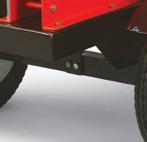









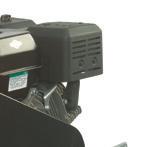


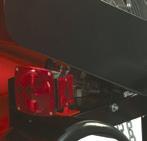






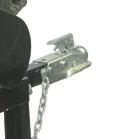




DR® Field & Brush Mowers are Built to Last, Engineered to Perform
• Up to 2X the power of the competition to mow thick overgrown fields and saplings up to 3" thick


• Easy to use controls and four season attachments
• Full line-up of commercial, electric, walk- and tow-behind models


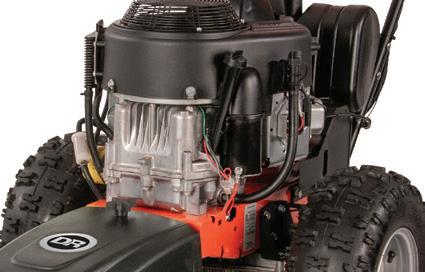















































































































e starting gate opened and 19 horses galloped o , each jockeying for the lead. While Apache, the horse I bet on, was the odds-on favorite, his rival Napoleon pulled ahead in the race’s nal seconds.
In less than a minute I lost a fortune at the Paris horse races.
After a brief moment of disbelief, something caught my eye. It seemed like every woman in Paris was carrying the same classic handbag! I had to have one for my own, so I had our handbag designers interpret this classic o er. Presenting the Parisian Chic Claire Handbag.

I Lost a Fortune at the French Races, but Fortunately I Found is Bag Ready! Set! Go!”
Backed by our satisfaction guarantee, you can revel in its sophistication risk-free for 30 days. Should it fail to dazzle, return it for a full refund of the item price.
Handbag Speci cations:

• Brown vegan leather.

• 8 1/2”x 4” D x 6 1/2” H, 9 1/2” H w/handle.
• Two interior open pockets, two interior zipped pockets, one outside zipped pocket.
Parisian Chic Claire Handbag
$299 $39* + S&P Save $260
*You must use Insider Offer Code PCH162-01 to get this price.

Inspired by the equestrian gear I encountered in the stables after the race, the Claire Bag is the color of saddle leather with metal adornments that recall horse bits and stirrups. Sturdy and chic, the Claire Bag is ideal for the woman on the go. See for yourself why the Parisian Chic Claire Handbag is the toast of France!




201 Bullionville Road
Panaca, NV 89042
Phone: 775-728-8200
Toll free: 888-649-3814
Email: lcpd1@lcpd1.com
DIRECTORS
President Richard Katschke
Vice President Cory Lytle
Lorin Wilkin
Cory Wadsworth
Paul Donohue
General Manager
Dane Bradfield
Board meets the second Monday of each month.
The beginning months of the year often bring some of the coldest weather. As home heating systems work harder to keep us warm, we typically see higher energy bills.
When you receive your monthly bill from Lincoln County Power District, you’ll see a summary of how much electricity you used during that billing cycle. If you use our SmartHub app, you can track daily electric consumption and may notice spikes on especially cold days or when guests stay over. You might be surprised to learn that, beyond your monthly energy consumption, external factors can also affect the cost of electricity.
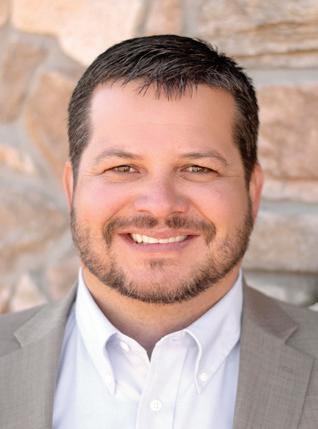
Fuel prices: LCPD buys electricity from two main sources. Hydropower from Hoover Dam and supplemental power from Arizona Electric Power Cooperative is bought at a wholesale cost and delivered to our communities. Generating and transmitting electricity accounts for a major portion of the cost to provide service, and the price of fuels used to generate power—such as natural gas and coal—rises and falls with supply and demand. While these shifts can affect electricity costs, we work closely with our suppliers to plan ahead and stabilize prices for members.
Extreme weather: Although we can’t control the weather, we review weather patterns and forecasts to prepare for times of extreme cold and heat, when demand for electricity is highest. But when temperatures plummet, demand spikes, and prices may increase.
MISSION STATEMENT
To construct, operate and maintain a system that will provide our customers with electric service in the most economical and efficient manner consistent with sound business practice.
Infrastructure and equipment: To cover the cost of delivering electricity to your home or business, LCPD customers pay a monthly fee. This fee ensures the costs of equipment, materials, labor and operations are covered across our service area. To deliver reliable service, we must maintain the local grid, including lines, substations and other key infrastructure.
Energy policy and regulations: Federal energy policies and regulations can greatly affect electricity costs. As more power is generated from renewable sources and stricter regulations are placed on traditional fuels—such as natural gas and coal—costly upgrades and technologies must be constructed and deployed. These added expenses eventually reach consumers. United States power consumption is expected to double by 2050. Across the country, electric cooperatives are working with state and federal legislators to advocate for responsible energy policies that reliably power our local communities.
While many external factors are outside our control, we all have the power to manage energy use at home. Thermostat management is the most effective way to reduce consumption. Because heating and cooling account for the largest share of home energy use, setting your thermostat to the lowest comfortable temperature in winter can help you save. Remember to schedule regular service for your heating and cooling system, and replace filters as needed. Consider scheduling energy-intensive chores during off-peak hours when demand is lower. These small changes can add up to big savings.
Lincoln County Power District is your local energy partner. As always, we continue to work diligently to provide you with reliable power at an affordable cost.
Dane Bradfield, General Manager